SAMURAI SWORD 35 - WWII KATANA BY AMA-HIDE
This is a Japanese WWII Samurai Katana sword. In overall very good condition. The blade and fittings are of
World War Two type. The handle is wrapped in a dark green cloth. A set of Menuki are found on each side of the
sword. They are of three flower design.

The scabbard has a metal shell over a wooden insert. Four fittings are found spread around the main body. The tip
has a drag piece which protects the main body.

The throat of the scabbard has a cloth wrapping and a leather ring with a male snap component. The base of the handle
has a similar leather ring with a flap that has the female snap. This is an interesting way to lock the sword in place.
Instead of using the standard locking mechanism which is internal, the design has made it external and less prone to
failure.
The button on the female snap has a white center outlined by a black design. This hardware does not appear to be of
military issue. It seems that the soldier put in place his own system. This is more than likely a field alteration.
The suspension ring normally found on the scabbard is missing. However, all of the supporting hardware is present.
It is possible that the soldier removed this piece in order to carry the sword in a more traditional manner - inserted
across the belt.


|
The Samurai sword has a very rich history. The sword has been manufactured for several centuries and continues
to be produced today. The sword represented more than just a weapon. It was the soul of the Samurai warrior.
When attempting to identify the type of sword you have It is important to keep in mind that the fittings of
a sword (scabbard, handle, crossguard. etc.) may be identical from one sword to another. The reason why is
because during WWII the same fittings were used in all Army swords, Navy swords, etc. Armed forces are all
about uniformity. They strive to make everything the same.
This is the reason why a sword cannot be identified merely by its external appearance.
Understanding the different components that make up the Samurai sword is the first step in figuring out the
type of sword you have. That is the reason why we have created the
Understanding the Samurai sword section as a means to
provide a novice with the basic knowledge to start the path of determining the questions everyone has;
who made the sword, how old it is nad how much it is worth.
|
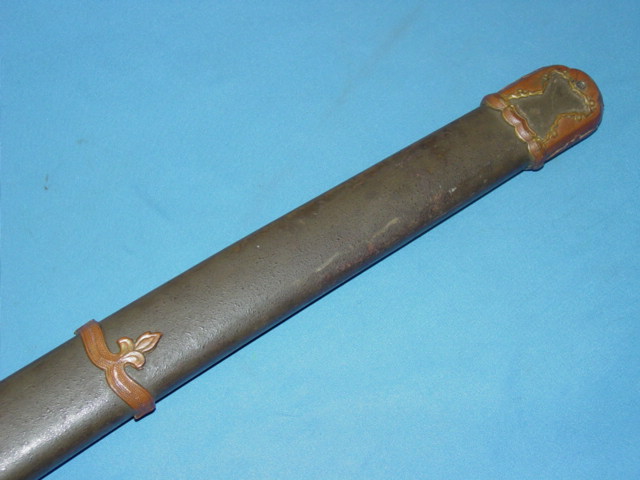

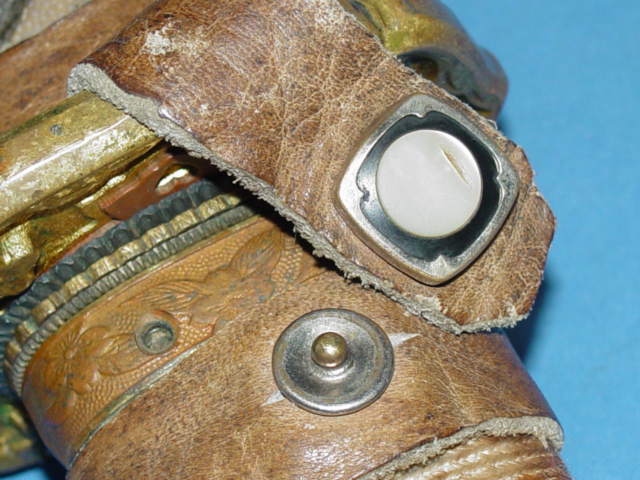
The following pictures show a closeup view of the Habaki. It is of copper construction and plain design. This was
characteristic of the WWII era.
The blade shows original polish. The Hammon is not very visible. The edge does not have any major nicks or damage.
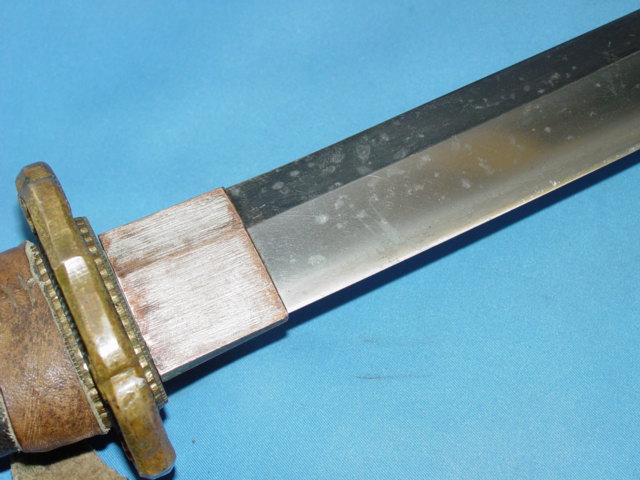
|
This page is a recognition and identification guide for Samurai swords.
Multiple detailed photos of a specific sample are provided. Descriptions point
out clearly defined points that should be noted.
One of the most commonly asked questions is "How much is my Samurai Sword worth?".
A price guide is included here to address this question. The value of the swords is
reviewed over a period of several years. A trend can be observed. The present worth
of the edge weapons in the collector's market is illustrated.
This service is provided free of charge to the visitor/enthusiast courtesy of
MilitaryItems.com,
a company dedicated to the preservation of military history and to providing quality
military antiques and collectibles to museums, institutions and the general public.
|
|

These photos show the layout and components that make up the Tsuba. Spacers are placed above and below the Tsuba.
They provide the necessary elevation for the locking mechanism to fit better. Notice that the Tsuba is of later
war production as it does not have a hollowed structure. The usual Chrysanthemum flowers are placed in each
corner.
An interesting fact of the Tsuba and spacers is that they are marked with production numbers written in Japanese.
Every part displays the same number. This characteristic is known as "Matching numbers".

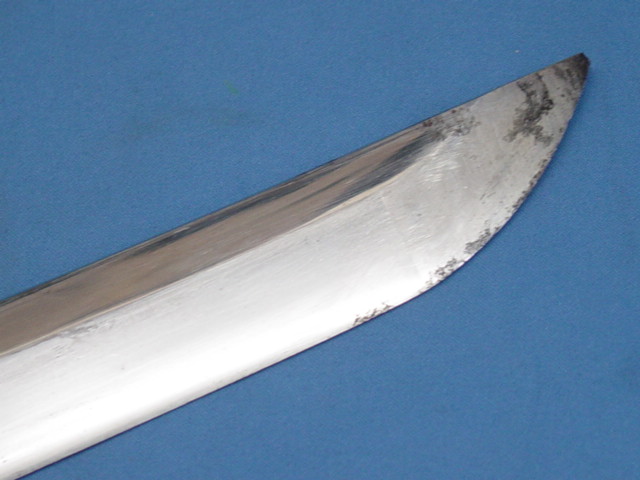
The tang of the sword shows aging. A single hole near the start of it has been drilled. This is where the handle pin
is placed to secure the handle to the sword.
One side of the tang has been signed. The other side is blank. The end of the tang is rounded. The signature is
nicely done with deep markings. A translation is provided and indicates the sword was made by master Ama-Hide.


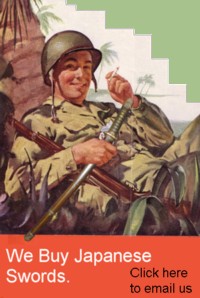
|
WE BUY JAPANESE SWORDS - All types of Japanese edge weapons. Whether it is a WWII era Samurai sword or an
older type of blade.
The process gets started by you sending us an
Email .
We will respond to your inquiry normally within 24 hours and in many cases much faster.
We can tell you what you have, what it is worth and how much we can pay you.
One sword or an entire collection -
Email Us .
|
 |




By the Numbers
It is next to impossible to determine the exact number of Samurai swords that were produced and issued to
Japanese soldiers during the war. However, thanks to the record keeping maintained by the US Armed Forces,
it is possible to estimate how many swords were actually shipped home.
 |
There were over 500,000 Samurai swords were brought back home as souvenirs from the war.
There are several caviats to this number.
|
 |
For example, some soldiers took souvenirs and shipped them home circumbenting the established process.
Some of the swords were brought back inside duffle bags without anyone knowing except for the soldier who
captured the sword. This fact would clearly affect the final count.
The number also does not account for swords that were taken by Allied soldiers from other countries.
Collecting Samurai swords
Collecting Samurai swords is a field that has been growing since the days the GI's rummaged around Asia
bringing back military souvenirs. Japanese soldiers carried many of these swords when they went to
battle. Once the soldier was killed or captured, the Americans would take the edge weapons as war trophies.
Eventually all these pieces came back to the United States where military history enthusiasts began to collect them.
 |
In trying to determine if you should collect Samurai swords there are certain factors that should be
considered.
The adjacent table outlines some of the advantages and disadvantages of collecting the Samurai swords.
|
 |
This Samurai Sword may be currently reproduced.
It is becoming more difficult to be able to tell the fake ones from the real ones because
the quality of the reproductions is improving. The collector must become familiarized with
the construction style and materials employed in the manufacturing of this item.
Attention to the details is critical in order to be able to determine the authenticity of
the collectible.
If you have an interest is seeing other Japanese Samurai swords, you can do so by going to our
Japanese Samurai Swords Price Guide
identification guide. Where we cover Samurai swords from all periods.
| 




